Implementing Website Personalization in 2024: Strategies, Use Cases, and Best Practices
One-stop-shop on benefits of website personalization and impact on key marketing goals, industry use cases, best practices, and more!

Reading Time: 10 minutes
With the modern consumer’s attention span reducing to that of a goldfish, real-time website personalization has become a key component in a marketer’s toolkit. The ROI and benefits of personalizing your website have a far-reaching impact on boosting your revenue and engagement and creating a delightful customer journey.
What is Website Personalization?
Website personalization is an intelligent marketing strategy to create personalized website experiences for visitors and customers based on their preferences, behaviors, affinity, and more. This can include personalizing a website’s content, layout, banners, deals and offers, and recommendations to sync with the customer’s and visitor’s interests, demographics, preferences, and browsing and purchase history.
Real-time personalized web experiences improve customer engagement and conversions and create a great overall website experience. Not just that, you can leverage website personalization to build stronger customer relationships by providing relevant and timely products, content, and offers.
| Learn how MoEngage can help you create personalized web experiences! |
What Are The Benefits of Website Personalization?
1. Create Highly Optimized Website Pages
Higher CTA Conversions
Website personalization can help boost your Call-to-Action (CTA) conversions by tailoring the messaging and placement. This can be based on the visitor’s behavior, preferences, and other historical data.
For example, if a visitor has spent more time on a specific product page, you can personalize the CTA to nudge the visitor to purchase that product. By using personalized messaging and offers in your CTA, you can create a sense of urgency and Fear-Of-Missing-Out (FOMO) that persuades visitors to take the intended action.
Relevant Content Recommendations and Messaging
Website personalization can help you deliver more relevant content recommendations and messaging to visitors.
With past behavioral data and preferences, you can recommend related products, services, or content to visitors or customers in real time. This way, you can enhance the website experience and encourage visitors to spend more time on your website, increasing the chances of conversions.
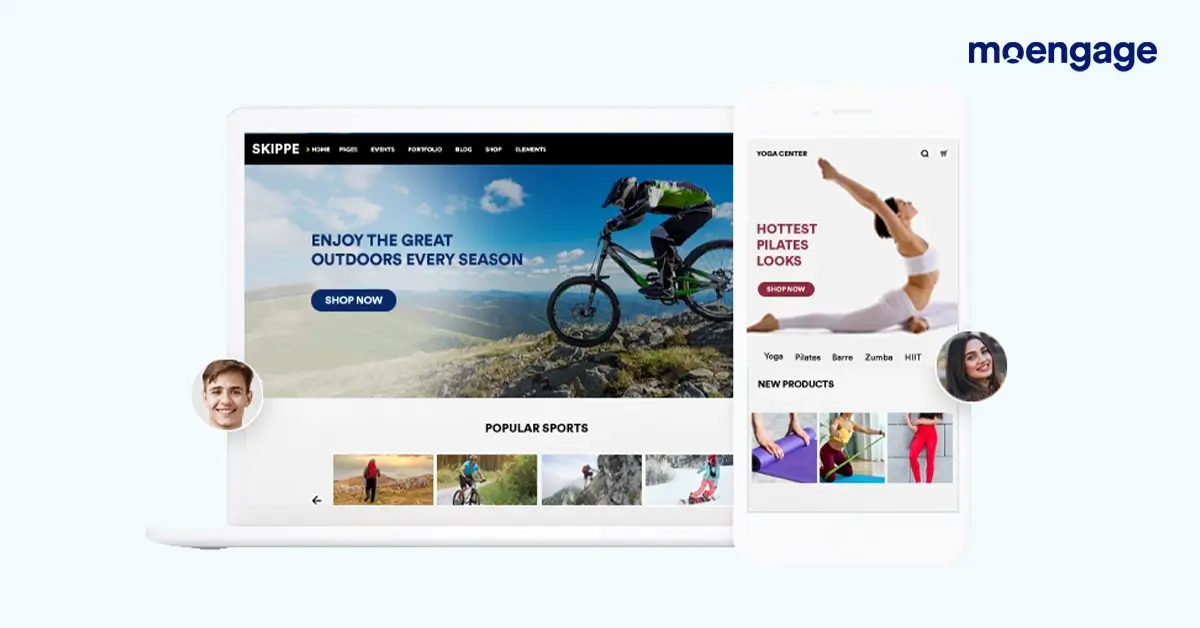
| Learn why Personalization matters and is the future of marketing! |
2. Boost Engagement, Conversions, and Retention On Your Website By Knowing What Your Customers Want
Knowing your visitors and customers
With website personalization, you can analyze your visitors’ and customers’ interests, demographics, and browsing behavior and make data-driven decisions. This way, you’ll be able to understand their interests and preferences better and accordingly tailor your website content and offers to give them a seamless website experience. This also increases the chances of conversion.
| Learn all about deep diving into customer journeys with real-time personalization! |
Boost website engagement
You can offer a more engaging real-time website experience by delivering content, product recommendations, and offers tailored to your customer’s interests and behaviors. With relevant experiences, your website visitors and customers will likely browse more and shop from your website.
Improve retention
Website personalization boosts your retention rate and improves brand recall. They are likely to return to your website more. Personalizing your website will increase customer loyalty in today’s cut-throat competition and stay on top of your customer’s minds.
Convert anonymous visitors to customers
Website personalization can also help convert anonymous visitors to customers by encouraging them to share their information and preferences to deliver a personalized experience. By analyzing this information, you can create a more tailored experience, increasing the chances of conversion.

3. Build a Memorable Brand Experience
Improve brand recall
You can improve brand recall with website personalization by creating a consistent and memorable experience for web visitors and customers. By tailoring your website’s content, recommendations, and messaging to your visitor’s interests and preferences, you can create a more personalized and relevant experience that stands out. This helps portray your brand values and how your audience relates to your brand.
Build trust
By personalizing your website to your visitors’ and customers’ tastes in real-time, you’re winning their trust by showing that you understand them and are committed to providing a smooth experience and value. This also helps your brand boost its credibility and reliability as the right source of information and products/services.
What Are The Types of Website Personalization?
There are several ways to personalize your website and create a more tailored experience for your visitors and customers. Here are some examples of how you can personalize different website elements:
1. Homepage Personalization
Hero image
The hero image is the large, visually prominent element on your website’s top fold. Personalizing the hero image can create a great first impression and catch the visitor’s attention. You can use images that evoke an emotion or tell a story or visuals that sync with the visitor’s interests, location, historical data, or demographics.
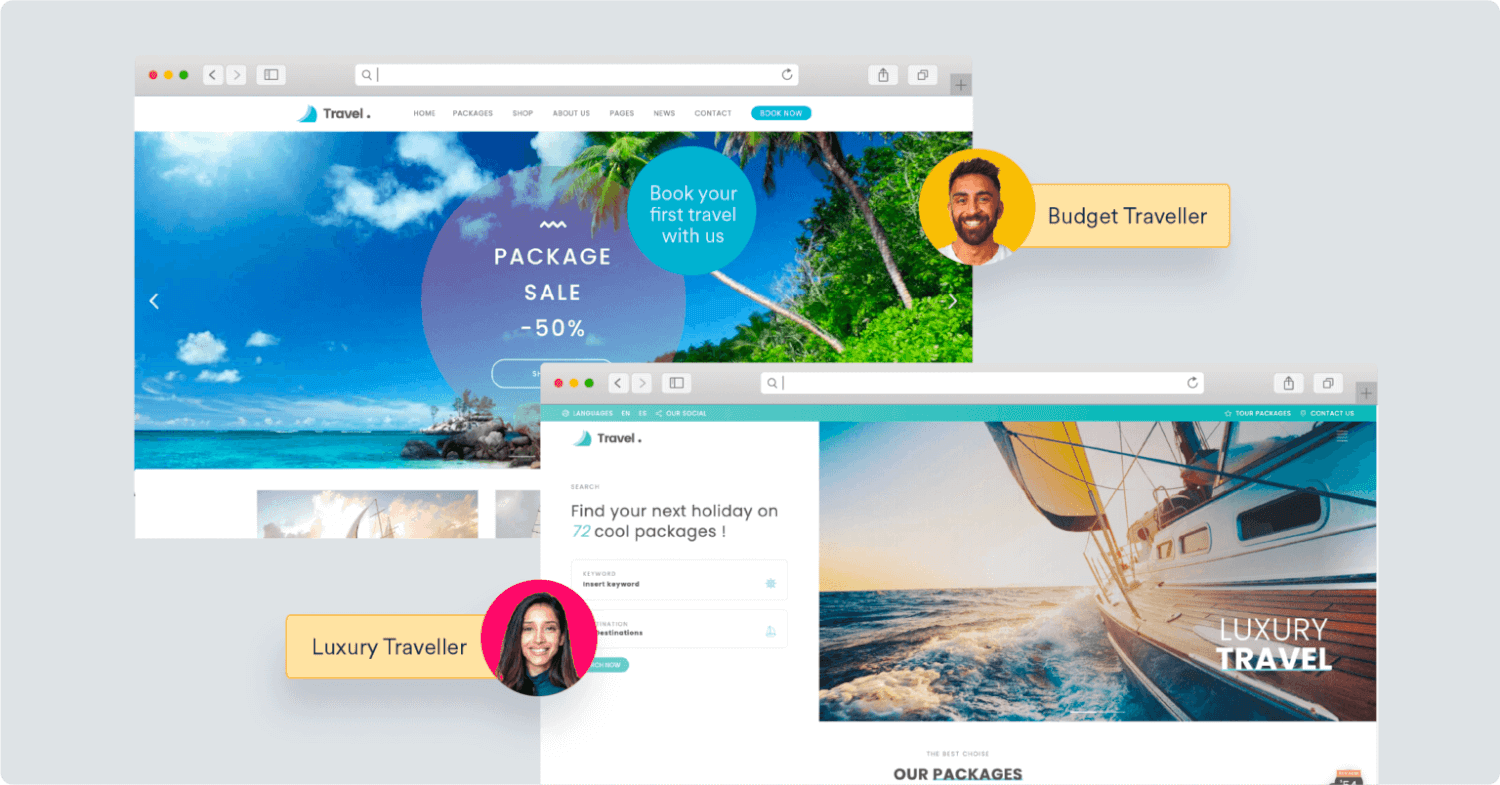
Contextual Personalization
Personalizing your website content contextually can help build a more relevant and engaging experience for your visitors. For instance, you can show content that uses the language and tone the visitor can relate to based on their behavior, preferences, location, and what they’re looking for.
| Learn how POPS Worldwide increased product stickiness by 19% via personalized content recommendations! |
Product recommendations
You can increase your conversions and Order Value by showing personalized recommended products. You can do this based on browsing history, previous purchases, interests, or location and recommending relevant products.
Banners
You can personalize your website banners to create a more targeted and persuasive experience. A few ways to personalize banners are by offering personalized discounts, content, and visuals based on the customer’s preferences, historical data of previous website interactions, or even omnichannel website interactions.
| Read more about mastering the art of B2C personalization |
2. Product Page Personalization
Personalizing your product pages is a robust engagement and conversion tactic widely used by E-commerce marketers. There are several ways to personalize product pages.
Past purchasing history
By analyzing the customer’s past purchasing history, you can personalize product and category pages to show products relevant to the customer’s past purchases.
Amazon uses past purchasing history data to personalize product pages for visitors and customers. For example, if a customer has previously purchased home storage items, Amazon’s product pages show related products or product categories such as other storage solutions, lights, or curtains.

Relevant recommendations
Recommendation engines help you personalize product/category pages to show recommended products likely to interest your website visitor. This is possible by analyzing browsing history, purchase history, and product views, and you can suggest similar or complementary products that the visitor might likely be interested in.
Netflix has a powerful recommendation engine that personalizes its show/ movie category pages for its customers. By analyzing viewing history, Netflix recommends movies and TV shows similar or complementary to the customer’s taste based on previous viewing history. Showing relevant movies and show recommendations helps their customers discover new content.
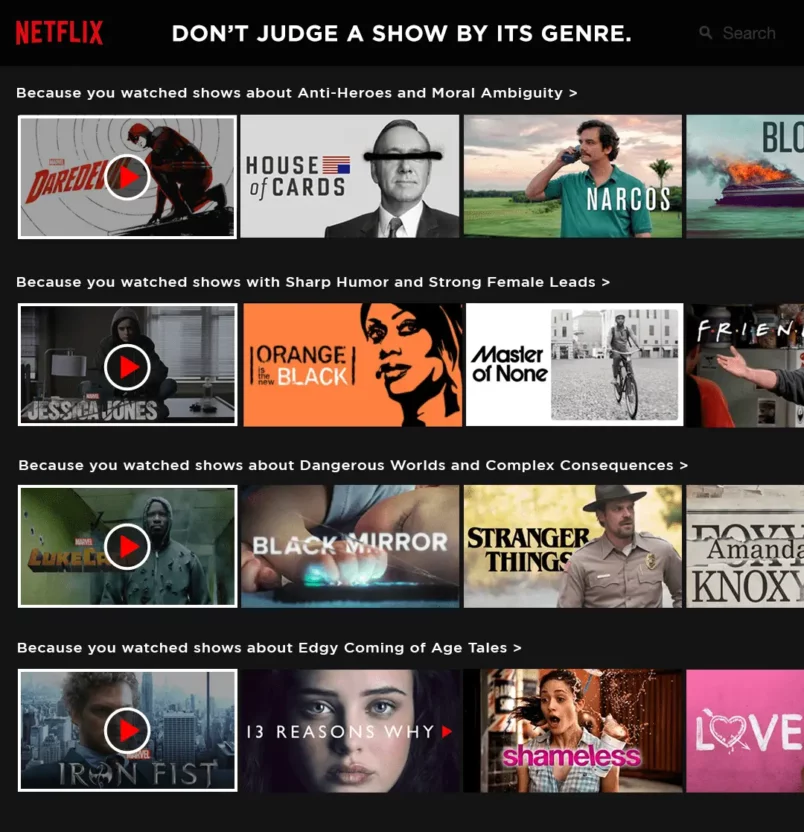
Related products
By showing products related to those previously viewed or purchased in the past, you can increase the chances of cross-selling and upselling. Offering related products also encourages your website customers to explore additional products and make a larger purchase, boosting your Average Order Value (AOV).
For example, if you’ve browsed for trousers on H&M’s website, you’ll be shown personalized related products such as shoes, bags, and accessories that you can style the trousers with. This helps in product discovery, spending more time on the website, and even boosting the chances of placing a larger order.
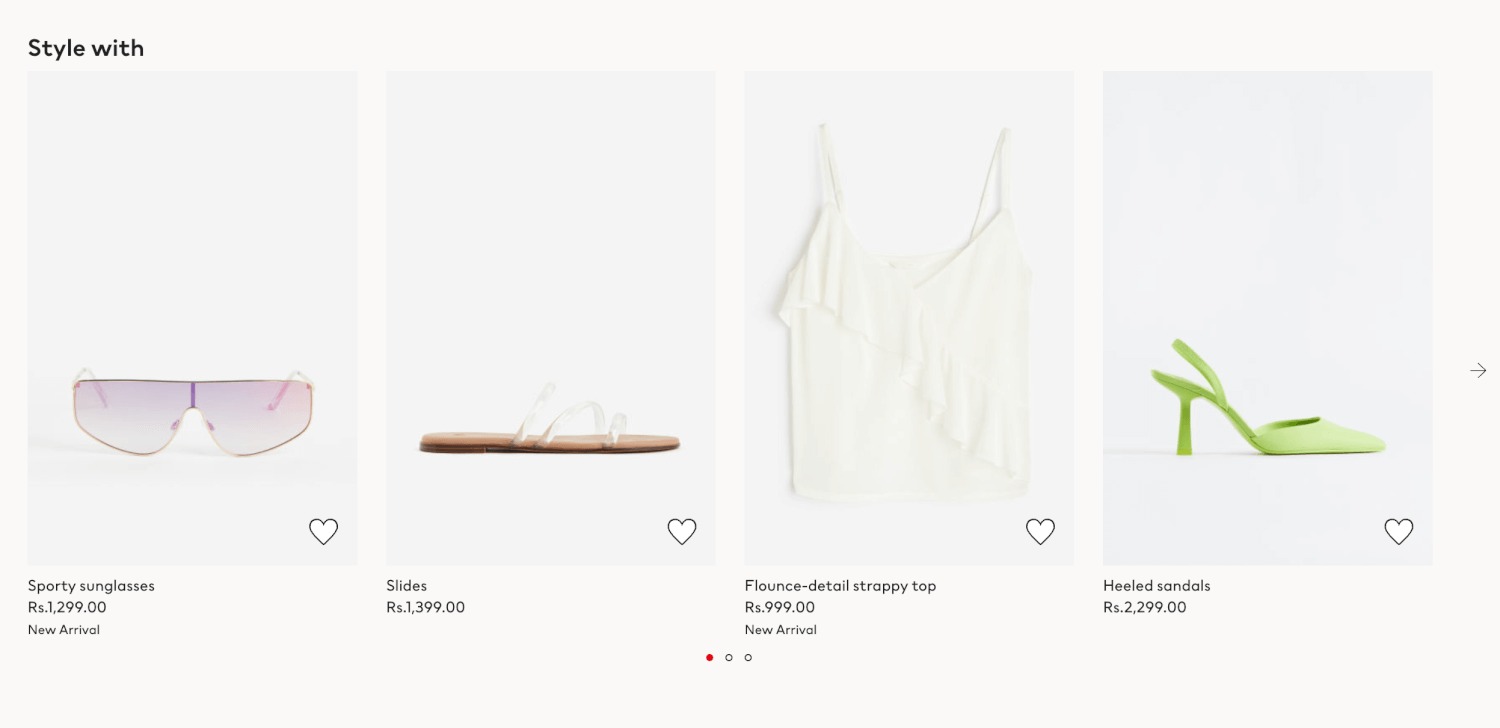
Trending Products
Create that Fear-of-Missing-Out (FOMO) and a sense of urgency by highlighting popular or high-demand products. You can do this by encouraging customers to place an order before they go out of stock or out of fashion.
Sephora shows its website visitors products in fashion, popular, or high demand by creating urgency and excitement and encouraging customers to purchase them before they go out of stock.
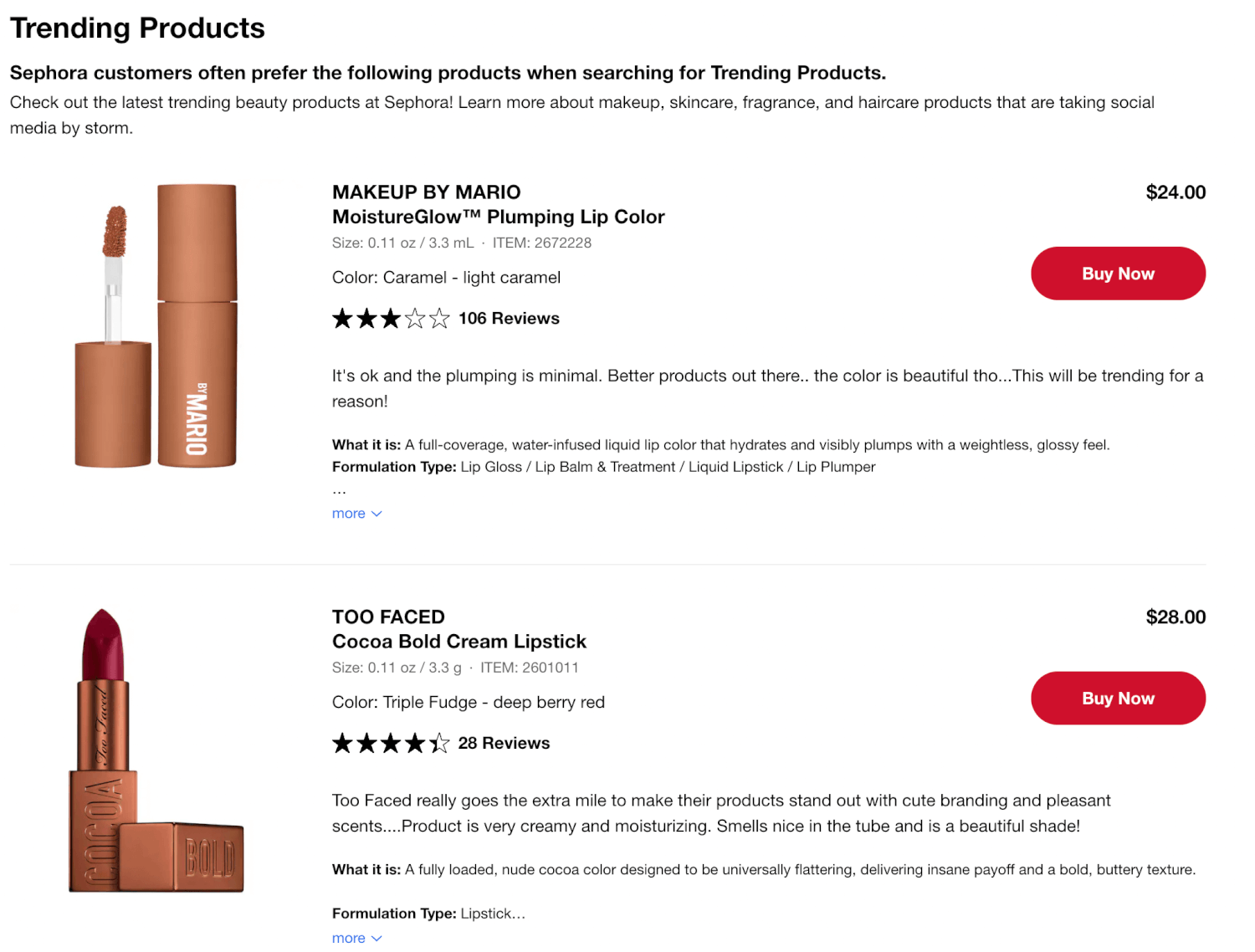
Product discovery
Shopping brands can boost product discoverability and website engagement by showing personalized product recommendations, related products, and trending products to create a more dynamic and personalized browsing experience that nudges your customers to explore and discover more or new products.
Adidas personalizes its product pages by analyzing past viewing or shopping history, interests, and location. Customers who visit their website are shown personalized product recommendations, related products, and even current trending products.
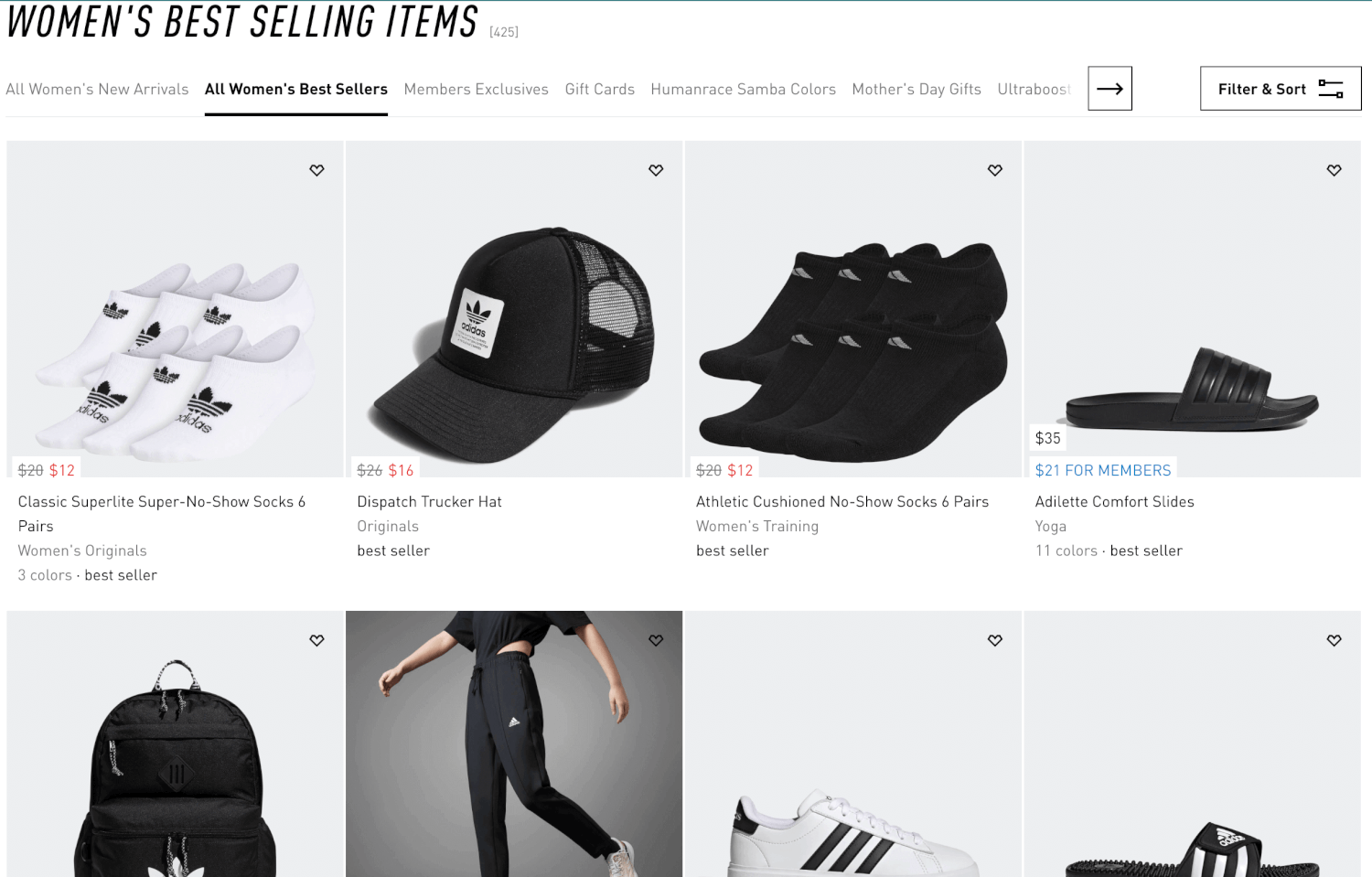
3. Shopping Cart Page Personalization
Personalizing the shopping cart page is a powerful way to boost sales and encourage additional purchases, increasing your Average Order Value (AOV). Here are some ways you can personalize your shopping cart page:
Upsells
Offer upsell recommendations on the shopping cart page. This is a great way to increase the Average Order Value through website personalization. For example, suppose a customer has added a camera to their cart. In that case, you can suggest higher-end cameras or accessories that complement the camera on the shopping cart page.
Amazon upsells brilliantly by showing product recommendations on the shopping cart page based on the customer’s browsing and purchase history. For example, if a customer has added a laptop to their cart, Amazon may suggest accessories like high-end noise-canceling headphones, sleeves, bags, or a mouse.
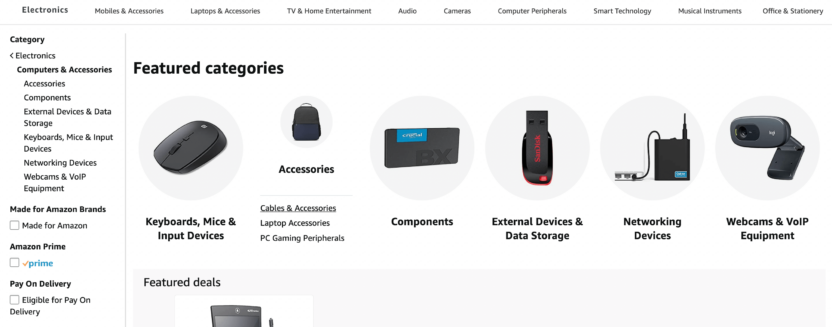
Related recommendations
Show related products to the ones added to the cart on the shopping cart page to encourage customers to make additional purchases. For example, suppose a customer has added a pair of shoes to their cart. In that case, you can suggest complementary socks, shoe inserts, or even clothes that complement the shoe category – running shoes with running shorts or stilettos that may go well with a dress on the shopping cart page.
When you’re on Best Buy, you’ll see offers related to the products added to your shopping cart. For example, if a customer has added a TV to their cart, Best Buy may recommend related products such as a soundbar or a wall mount.
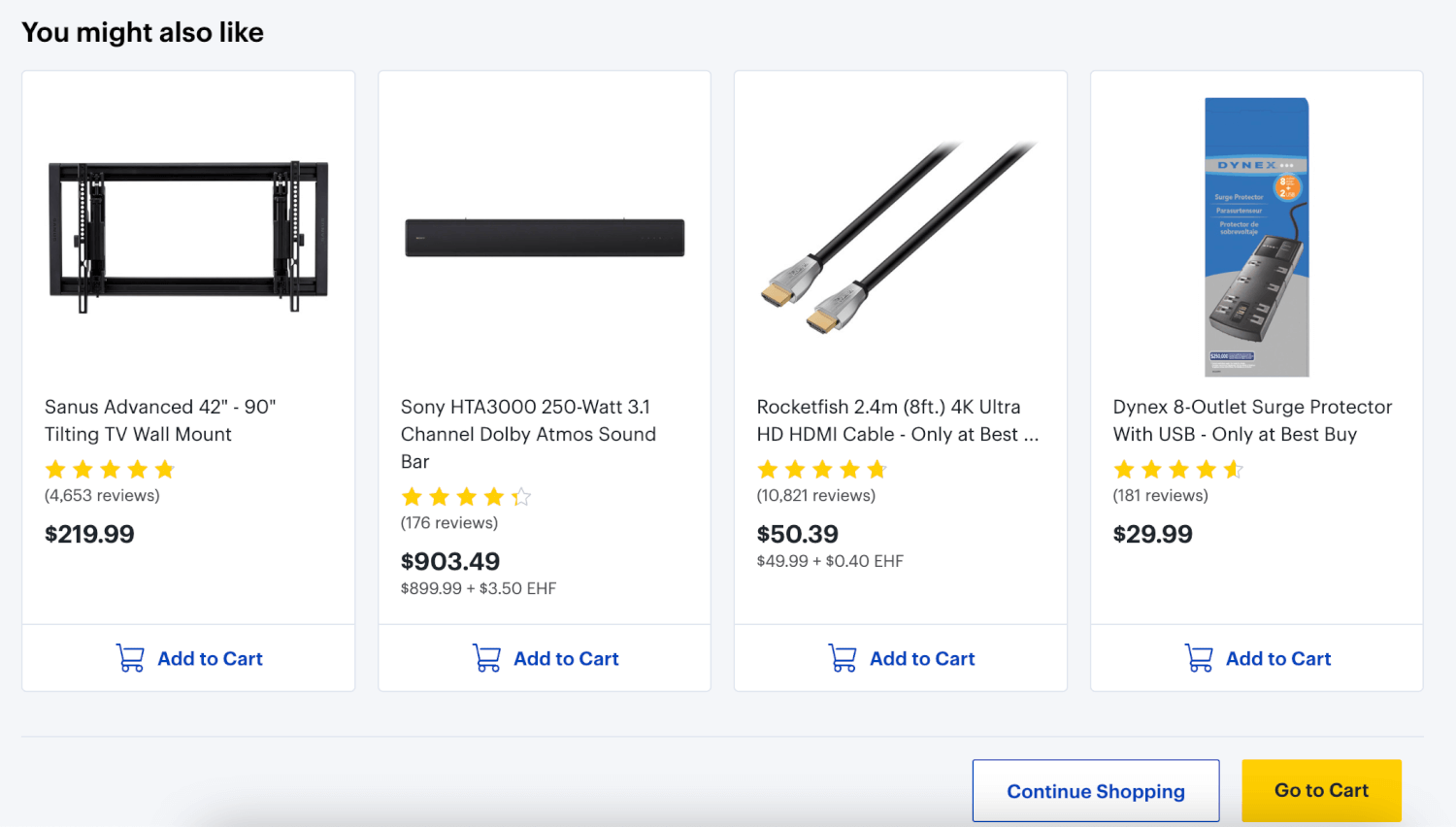
Trending products
Showing trending products to customers on the shopping cart page helps create a great sense of urgency and excitement. For instance, if a customer has added a shirt to their cart, you can suggest similar trending or popular shirts on the shopping cart page.
| Learn leading D2C brands are driving more customer engagement using cross-channel personalization! |
Zulily implements this based on the customer’s past browsing patterns. For instance, if a customer has added a dress to their cart, Zulily suggests other popular dresses currently trending.
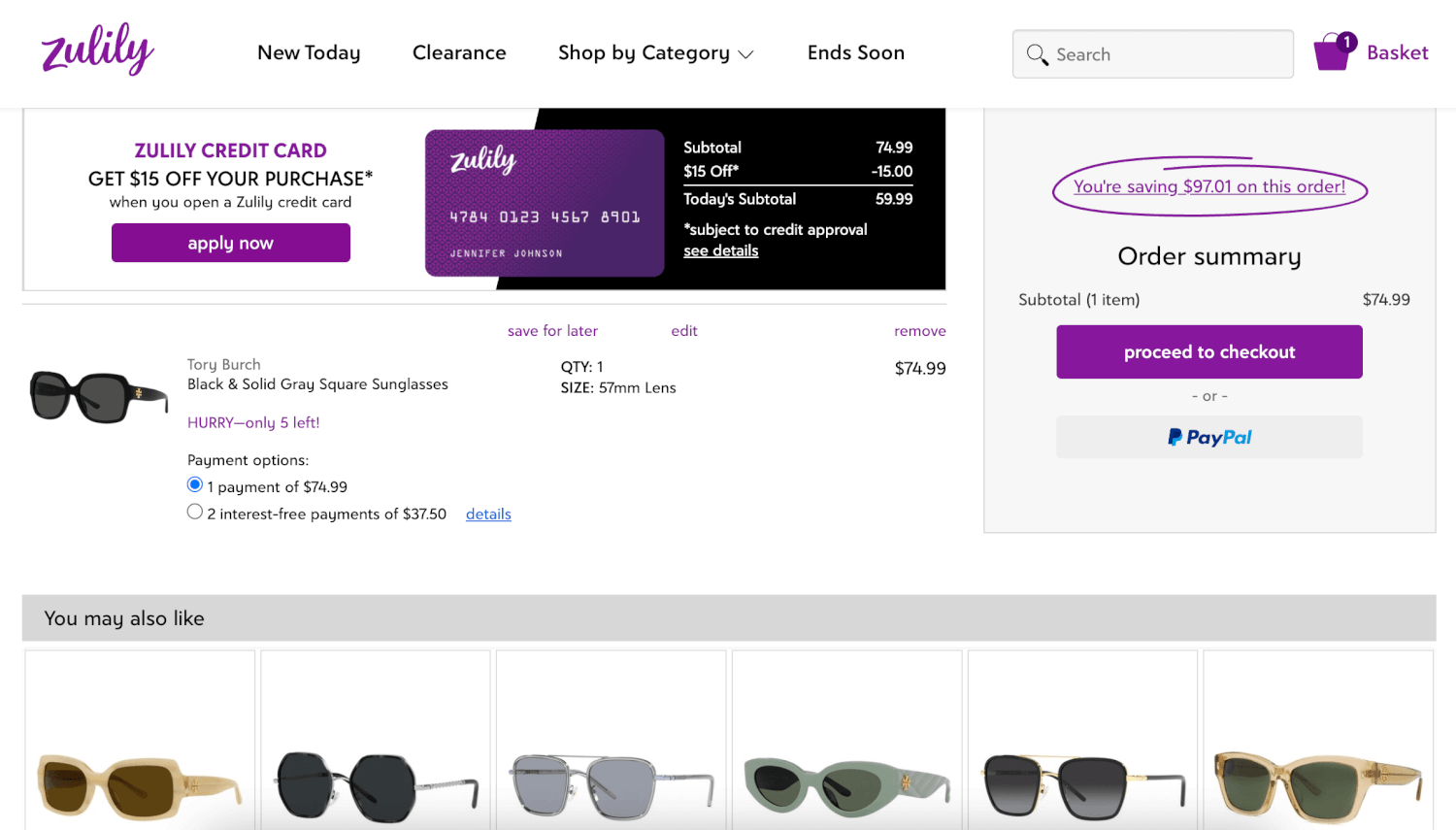
Impulse buys
Suggesting small or low-cost items such as bookmarks or pens when a customer adds a book to their cart is a great way to encourage customers to make an additional purchase
Sephora does this well by suggesting travel-size makeup or skincare products. This strategy encourages customers to add more items to their cart before checking out.
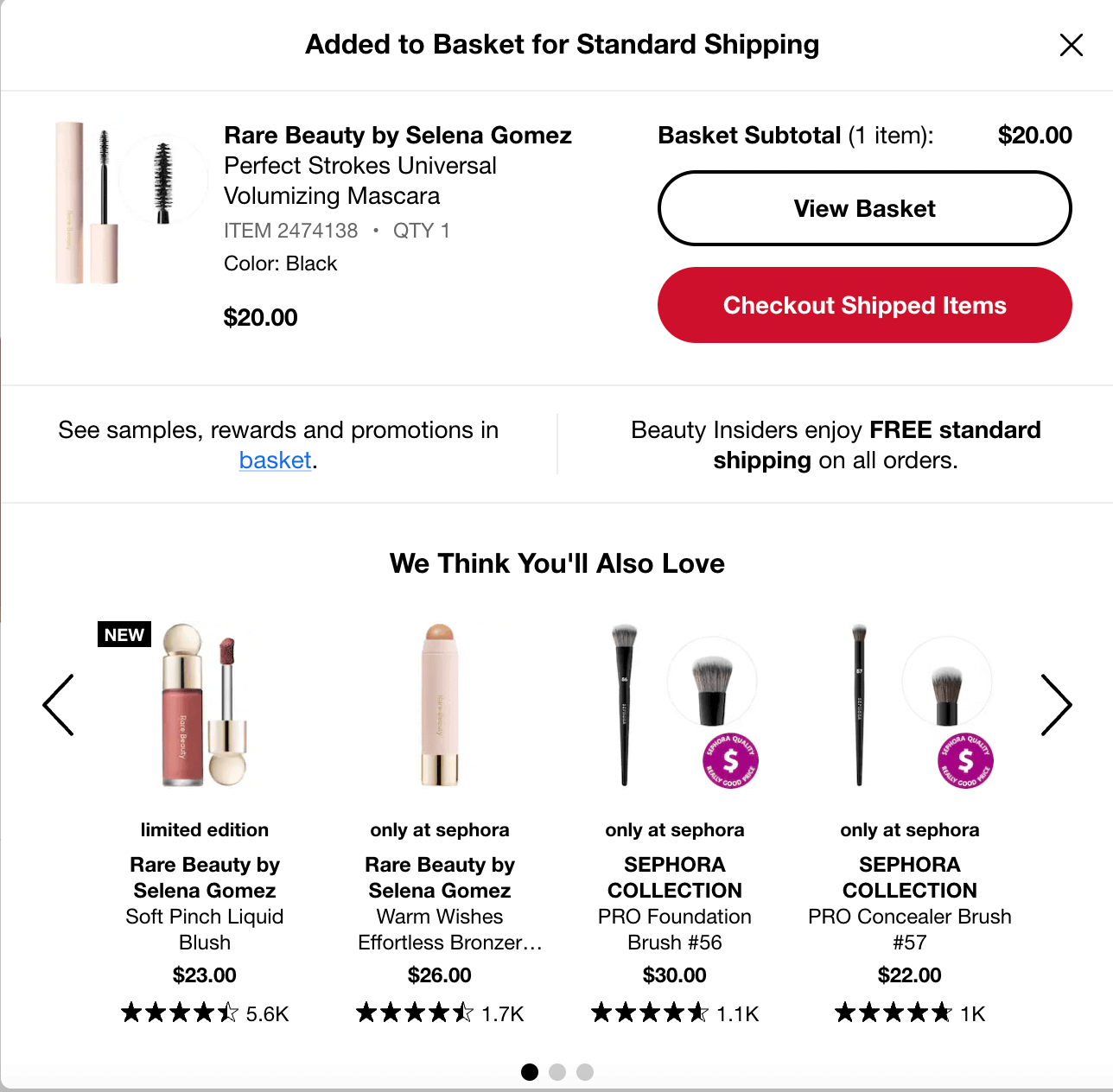
4. Different Website Elements
Content
You can personalize your website content in multiple ways to generate more engagement and boost conversions. Here are a few ways you can do this:
User preferences
You can allow website visitors or customers to select their preferred language and cultural context during account setup or on the website settings page. This way, your website can display the content in their preferred language.
Geolocation
Your website can show content based on automatic location detection. For example, if your visitor is from France, your website can automatically display content in French. This especially works well for multilingual websites or brands with a large global customer base.
Coca-Cola personalizes its website content by creating region-specific pages with localized content, promotions, and events. For example, their website in India features promotions for local festivals and events.
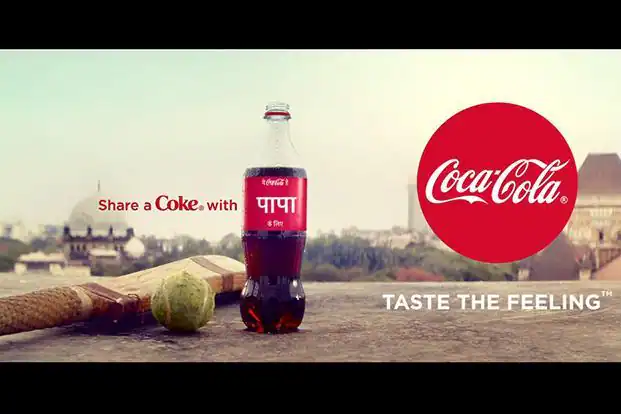
Banner
You can personalize website banners in multiple ways with the above-mentioned data points, such as browsing or purchase history, preferences, location, segment, and even season or festivals.
| Learn how Brands For Less Personalized Campaigns to Drive 2x MAU |
Myntra, a popular E-commerce brand in India, personalizes its website banners based on prominent seasons or festivals, such as ethnic wear for Diwali or winter clothing during the cold months.
Recommendations
You can provide recommendations for content, related or trending products based on browsing or purchase history, preferences, location, segment, and other factors.
Spotify, a popular music streaming platform, shares personalized music, artists, albums, podcasts, or playlist recommendations based on the customer’s previous listening history, preferred genres and artists, and even the duration and frequency of listening.
Conclusion
In today’s cut-throat competition, the need of the hour is to stand out in the crowd by creating personalized brand experiences in a timely and relevant manner.
When you prioritize personalization, you can create a connected and delightful web experience for your customers and anonymous website visitors, enabling you to improve your North Star metrics.
Here’s how you can implement Website Personalization to boost engagement, conversions, and ROI:
- Dynamic personalization of banner, image, text, and page components based on your audience
- Win-back journeys for cart abandonment that are contextually relevant and personalized
- User-specific product recommendations based on actions, purchases, and browsing
- Personalize messaging, notifications, and coupons based on user entry points, screens viewed, session history, etc.
- A/B test banners, messaging, and deals to easily orchestrate and deliver offers to the right customers at the right time
- Personalize customer experiences based on real-time activity, such as a pop-up displaying a corresponding product or a category recommendation
- Analyze, evaluate, and improve personalized campaigns by using data-driven insights and advanced omnichannel analytics
- Display time-sensitive content or offers based on the customer’s time zone or local time. This can include limited-time promotions, countdowns, or reminders for upcoming events.
MoEngage Personalize can help do all of this and more to help you create a personalized web experience. To learn more, talk to our experts now.
More topics coming soon!
- How to implement website personalization
- Use cases and examples of website personalization for each industry
- Website personalization best practices
- Website personalization metrics
Bonus reads |













